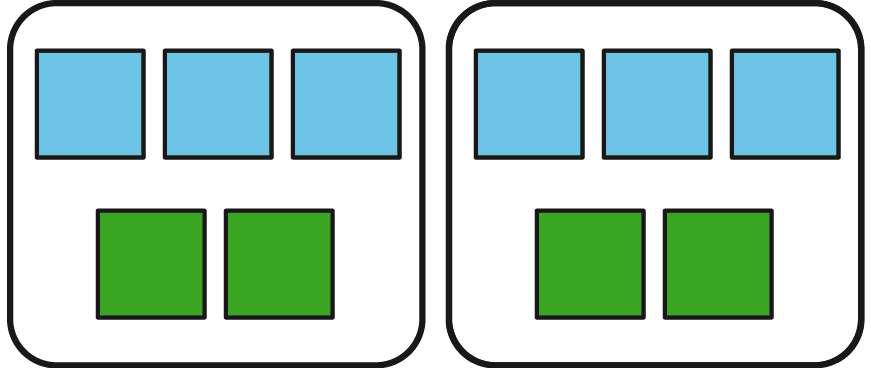Lesson 1
Introducing Ratios and Ratio Language
Let’s describe two quantities at the same time.
1.1: What Kind and How Many?

Think of different ways you could sort these figures. What categories could you use? How many groups would you have?
1.2: The Teacher’s Collection
-
Think of a way to sort your teacher’s collection into two or three categories. Count the items in each category, and record the information in the table.
category name category amount Pause here so your teacher can review your work.
-
Write at least two sentences that describe ratios in the collection. Remember, there are many ways to write a ratio:
-
The ratio of one category to another category is ________ to ________.
-
The ratio of one category to another category is ________ : ________.
-
There are _______ of one category for every _______ of another category.
-
1.3: The Student’s Collection
-
Sort your collection into three categories. You can experiment with different ways of arranging these categories. Then, count the items in each category, and record the information in the table.
category name category amount -
Write at least two sentences that describe ratios in the collection. Remember, there are many ways to write a ratio:
- The ratio of one category to another category is ________ to ________.
- The ratio of one category to another category is ________ : ________.
-
There are _______ of one category for every _______ of another category.
Pause here so your teacher can review your sentences.
- Make a visual display of your items that clearly shows one of your statements. Be prepared to share your display with the class.
- Use two colors to shade the rectangle so there are 2 square units of one color for every 1 square unit of the other color.
-
The rectangle you just colored has an area of 24 square units. Draw a different shape that does not have an area of 24 square units, but that can also be shaded with two colors in a \(2:1\) ratio. Shade your new shape using two colors.

Summary
A ratio is an association between two or more quantities. There are many ways to describe a situation in terms of ratios. For example, look at this collection:

Here are some correct ways to describe the collection:
- The ratio of squares to circles is \(6:3\).
- The ratio of circles to squares is 3 to 6.
Notice that the shapes can be arranged in equal groups, which allow us to describe the shapes using other numbers.

- There are 2 squares for every 1 circle.
- There is 1 circle for every 2 squares.
Glossary Entries
- ratio
A ratio is an association between two or more quantities.
For example, the ratio \(3:2\) could describe a recipe that uses 3 cups of flour for every 2 eggs, or a boat that moves 3 meters every 2 seconds. One way to represent the ratio \(3:2\) is with a diagram that has 3 blue squares for every 2 green squares.
